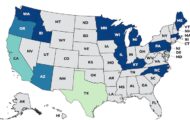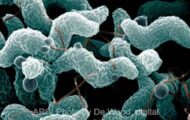Food Poisoning Bulletin is constantly searching for and publishing information about food and drink recalls for potential food allergens, and with good reason. According to the FDA, serious allergic reactions to food allergens causes 30,000 emergency room visits, 2,000 hospitalizations, and 150 deaths in this country every year.

Anaphylaxis is caused by a severe reaction to one of the eight major food allergens, which include milk, wheat, eggs, soy, fish, shellfish, tree nuts, and peanuts. More than 150 other foods can cause allergic reactions in people allergic to them, But those top eight cause 90% of food allergic reactions. While most allergies start in childhood, and while some children can “outgrow” their allergies, anyone can develop an allergy to anything at any time throughout life.
The Food Allergen Labeling and Consumer Protection Act of 2004 is enforced by the FDA. This Act guides the labeling of foods regulated by the FDA, which includes all foods except poultry, most meats, certain egg products, and most alcoholic beverages that are regulated by other agencies. Food labels must “clearly identify the food source names of any ingredients that are one of the major food allergens or contain any protein derived from a major food allergen.”
The name of the food source of a major food allergen must appear either in parentheses following the name of the ingredient, such as “lecithin (soy)” or “whey (milk)”, or immediately after or next to the list of ingredients in a “contains” statement. Examples of that use include “Contains Wheat, Milk, and Soy.”
Anaphylaxis causes constricted airways in the lungs, severe lowering of blood pressure and shock, or anaphylactic shock, and suffocation since the throat swells up. Administration of epinephrine by an auto injector can prevent serious consequences.
Mild symptoms can quickly become a serious threat to life. A person may have mild symptoms at first, but they can quickly escalate to anaphylaxis. The initial symptoms of an allergic reaction occur within a few minutes to 2 hours after consumption of an allergen. They may include hives, flushed skin or a rash, tingling or itchy sensation in the mouth, and face, tongue, or lip swelling. More serious reactions include vomiting and/or diarrhea, abdominal cramps, coughing or wheezing, dizziness and/or lightheadedness, swelling of the throat or vocal cords, difficulty breathing, and loss of consciousness.
There is no cure for food allergies; the person affected must learn to avoid that food. Learn to read labels and avoid problematic foods. Also learn to recognize early signs of an allergic reaction, and carry an epinephrine auto injector. If symptoms progress, go to an emergency room.
You can report a problem with food to the FDA. Report a problem or labeling issue, such as a potential misuse of “gluten-free” claims, for instance, to the FDA by contacting Medwatch. You can also contact the consumer complaint coordinator in your area. The FDA maintains a list of consumer complaint coordinators in each state.




